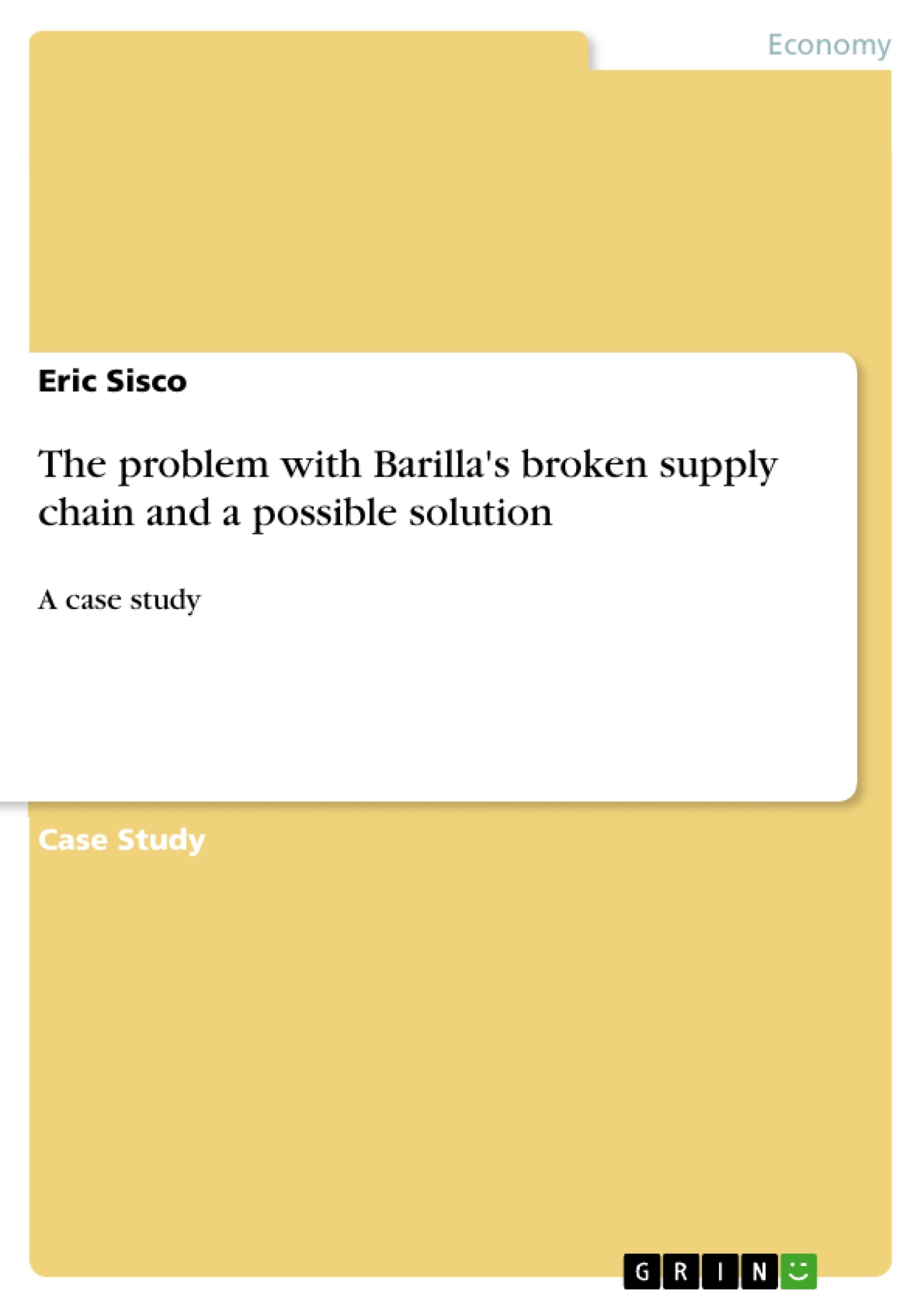The main problems that Barilla is having can all be traced back to the broken, or lack of supply chain that Barilla has. Barilla lets their distributors make the decisions on how much they will carry and deliver, as well as how much Barilla will produce. This combined with the lack of technology and transparency causes an ineffective and dysfunctional supply chain. Barilla made a big mistake letting their distributors make the decision, and then tell Barilla how much they were going to carry in their distribution center.
Inhaltsverzeichnis (Table of Contents)
- Barilla
- Barilla Issues
- Barillas Problems
- Barilla Solutions
- Barillas Best Route
- How to implement
- The Alternative
Zielsetzung und Themenschwerpunkte (Objectives and Key Themes)
This paper examines the challenges faced by Barilla, a leading pasta manufacturer, in managing its supply chain. It explores the impact of fluctuating demand and the bullwhip effect on Barilla's operations and analyzes potential solutions to address these issues.
- Demand Forecasting and the Bullwhip Effect
- Supply Chain Management and Distribution
- Customer Relationship Management (CRM)
- Vertical Integration and Just-in-Time Distribution (JITD)
- Technology Implementation and Data Analysis
Zusammenfassung der Kapitel (Chapter Summaries)
Barilla
This section provides a brief overview of Barilla's history, highlighting its growth and success in the pasta industry. It also introduces the challenges that emerged alongside the company's expansion.
Barilla Issues
This section focuses on the issue of demand forecasting and the bullwhip effect, common challenges faced by companies in the food industry. It discusses how these factors can negatively impact supply chain performance and lead to inefficiencies.
Barillas Problems
This section delves into the specific problems that Barilla encountered due to its fragmented supply chain. It highlights the lack of transparency, communication, and control in the distribution process, leading to inefficiencies and customer dissatisfaction.
Barilla Solutions
This section presents various solutions that Barilla could have implemented to address its supply chain issues. It explores different approaches to improve communication, data collection, and distribution processes.
Barillas Best Route
This section focuses on a specific solution that Barilla could have pursued, involving the implementation of a robust CRM system, an ERP system, and JITD. It outlines the benefits of this approach and how it could have mitigated the bullwhip effect.
How to implement
This section provides a detailed plan for implementing the proposed solution. It outlines the steps involved in data collection, analysis, and implementation, emphasizing the importance of collaboration with distributors and customers.
The Alternative
This section discusses the alternative of maintaining the current strategy, highlighting its inefficiencies and potential consequences for Barilla. It emphasizes the need for a more proactive and collaborative approach to address the company's challenges.
Schlüsselwörter (Keywords)
This paper explores the challenges of supply chain management in the food industry, focusing on the bullwhip effect, demand forecasting, customer relationship management (CRM), vertical integration, just-in-time distribution (JITD), and technology implementation. It examines how Barilla, a leading pasta manufacturer, could have addressed its supply chain issues through data-driven decision making and improved communication with distributors and customers.
- Quote paper
- Eric Sisco (Author), 2013, The problem with Barilla's broken supply chain and a possible solution, Munich, GRIN Verlag, https://www.grin.com/document/316514




